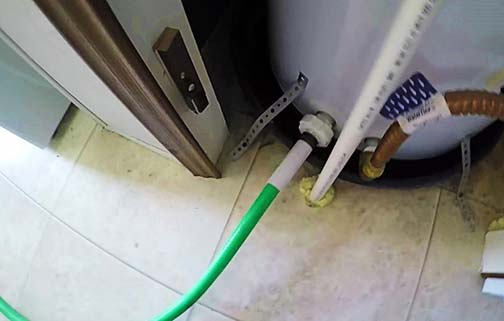Issues with your water heater are one of those home maintenance problems you never want to deal with. A malfunctioning water heater will bring many of the simple everyday things you take for granted in your home to a screeching halt.
When the water heater fails to work as it should or doesn’t work at all, taking a bath will go from being a pleasant experience to an ordeal you must endure. As Nest Finders Property Management points out, lack of warm water for household chores like washing clothes and dishes will make your life a lot harder than it needs to be.
But why do water heaters fail in the first place?
Most water heater issues are the result of not taking the small steps you need to ensure the health and efficient function of your water heater. One of the steps for keeping the water heater in your home in good working order is draining the water heater.
Why do you need to drain your water heater?
The reason is the water from the municipal supply looks clean to your eyes, but actually contains quantities of dissolved and suspended materials. Although these substances inside your water are harmless to you, they can present a problem for your water heater.
That is because as the water travels through the water heater and is heated to the evaporation point, its suspended or dissolved content is deposited inside the unit. These become sediment that lines the sides or bottom of the water heater and impedes its performance.
How does sediment affect the performance of your water heater?
- The water heater has to work harder to heat water because the deposit creates an insulating layer between the water inside the unit and the heating element.
- There is a significantly higher risk of corrosion, leaks, and blockages. The lifespan of your water heater may be severely shortened by these sediments.
- Due to the increased possibility of overheating, the risk of the tank exploding is higher. Chances that someone will get burned by excessively hot water also increase.
- You will pay more for energy because your water heater will use up more energy. Furthermore, you will need to replace the water heater sooner than you expect.
How to drain your water heater
To prevent sediment buildup inside the tank of your water heater, you should flush the tank once every year. This simple measure will make it easier to avoid water heater repair emergencies and also help your water heater last longer. Here is how to flush a water heater.
- Turn off the unit’s heat source. If this is an electric water heater, you need to unplug the heater or find the breaker and flip the switch to the off position. For gas water heaters, turn them off by changing the temperature settings to vacation or pilot mode.
- Find the water supply valve – the inlet pipe that supplies cold water to the unit – and shut it off. To do this, turn the valve until it is at a 90-degree angle to the pipe.
- Find the drain spigot at the base of your water heater and connect a garden hose to it. The other end of the hose should be outside your home, where you want to release the water.
- To let air into the tank, open the pressure relief valve on the side of the water heater. This will allow the water in the tank to flow out when you open the drain valve.
- Turn the valve of the drain spigot at the bottom of the water heater. You should feel the water flowing through the connected garden hose; note that the water will be hot (do not let children or pets play in the water).
- Wait until the water stops flowing. Your tank is empty but not yet clean; the flow of water was not forceful enough to agitate the sediments at the bottom of the tank. Open the cold water valve to release a spray of water into the tank for 15-20 seconds.
- Repeat step six several times (3 – 4 times) until there are no more particles in the water. To check if the water is clean, run some of it into a clean (preferably white) bucket and inspect for particles.
- Close the drain valve, along with the pressure relief valve, and open the cold water valve to fill the water heater tank. Close the cold water valve and open both the pressure relief valve and drain valve to empty the tank one last time.
- Close the drain valve and disconnect the garden hose. Close the pressure relief valve on the side of the tank and open the cold water valve. If it is a gas water heater, return the unit’s heat settings to the previous position. For electric water heaters, plug the unit back into the wall or flip the breaker to the on position.
